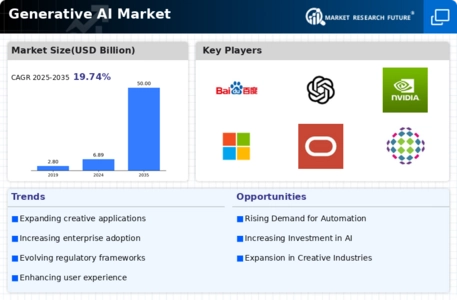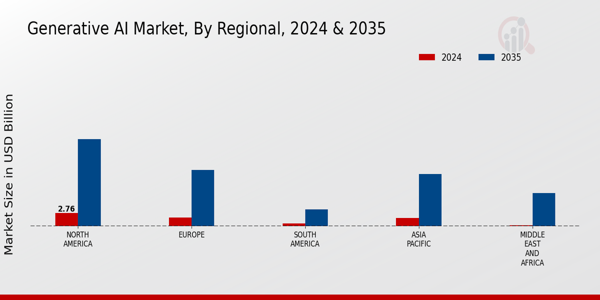Market Growth Projections
The Global Generative AI Market Industry is poised for substantial growth, with projections indicating a market value of 6.89 USD Billion in 2024 and an anticipated increase to 50 USD Billion by 2035. This remarkable growth trajectory suggests a compound annual growth rate (CAGR) of 19.74% from 2025 to 2035, reflecting the increasing integration of generative AI across various sectors. As organizations continue to recognize the transformative potential of these technologies, the market is likely to expand significantly, driven by innovations in machine learning, content creation, and ethical AI practices.
Emergence of Ethical AI Practices
The emergence of ethical AI practices plays a crucial role in shaping the Global Generative AI Market Industry. As concerns regarding data privacy, bias, and accountability grow, organizations are increasingly focusing on developing responsible AI frameworks. This shift towards ethical considerations fosters trust among consumers and stakeholders, encouraging broader adoption of generative AI technologies. Companies that prioritize ethical AI practices are likely to differentiate themselves in the market, potentially leading to increased customer loyalty and market share. This trend may further stimulate growth within the industry as businesses strive to align with evolving societal expectations.
Rising Demand for Content Creation
The Global Generative AI Market Industry experiences a notable surge in demand for content creation across various sectors. Businesses increasingly leverage generative AI to produce high-quality text, images, and videos, enhancing marketing strategies and customer engagement. For instance, companies in the entertainment and advertising sectors utilize AI-generated content to streamline production processes and reduce costs. This trend is reflected in the projected market value of 6.89 USD Billion in 2024, indicating a robust growth trajectory. As organizations recognize the potential of generative AI in automating content creation, the industry is likely to witness further expansion.
Increased Investment in AI Research
The Global Generative AI Market Industry benefits from increased investment in artificial intelligence research and development. Governments and private entities are allocating substantial resources to explore innovative applications of generative AI, fostering an environment conducive to technological breakthroughs. For instance, initiatives aimed at enhancing AI capabilities in healthcare, finance, and education are gaining traction, leading to the emergence of novel generative applications. This influx of funding is expected to propel the market towards a valuation of 50 USD Billion by 2035, as new solutions emerge to address complex challenges across various industries.
Growing Adoption of AI in Enterprises
The growing adoption of AI technologies within enterprises is a key driver of the Global Generative AI Market Industry. Organizations are increasingly integrating generative AI into their workflows to enhance productivity, streamline operations, and improve decision-making processes. For example, businesses utilize AI-driven tools for data analysis, customer service automation, and product design, resulting in significant efficiency gains. This trend is likely to accelerate as more companies recognize the competitive advantages offered by generative AI solutions, contributing to the market's anticipated growth and expansion in the coming years.
Advancements in Machine Learning Algorithms
Recent advancements in machine learning algorithms significantly contribute to the growth of the Global Generative AI Market Industry. Innovations in deep learning and neural networks enable more sophisticated and efficient generative models, enhancing the quality and relevance of generated outputs. For example, the development of transformer models has revolutionized natural language processing, allowing for more coherent and contextually aware text generation. These technological improvements are anticipated to drive the market's compound annual growth rate (CAGR) of 19.74% from 2025 to 2035, as businesses increasingly adopt these advanced solutions to meet their operational needs.
























